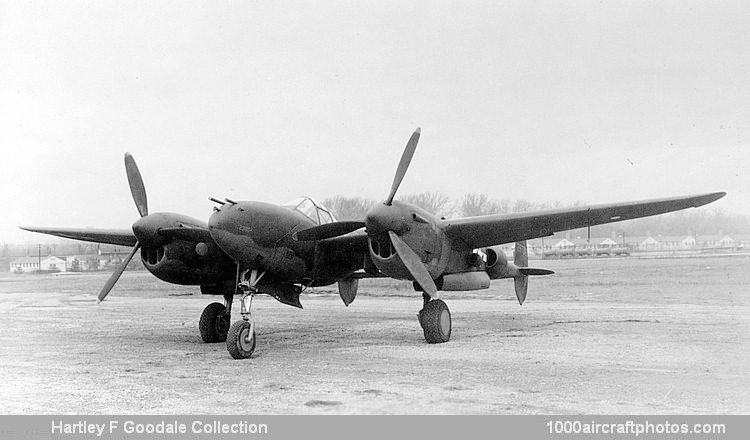Here the summary of the Engineering Division Memorandum Report No. Eng-47-1706-A of February 4, 1944.
The P-38J is designed as a high altitude fighter interceptor. This airplane has a fast rate of climb and performs well at high altitude, however, caution must be used in acrobatics and diving maneuvers at all altitudes to keep below limiting airspeeds. These airspeed limitations are low due to tail buffeting which may eventually cause structural failure and are definitely objectionable and hazardous from a combat viewpoint. The stability about all axis is good, the radius of turn is fairly large for a fighter and the rate of roll is fair at medium speeds, but slow at high speeds because of heavy aileron forces. The single engine operations, visibility on the ground and in the air and cockpit layout is good.
High speed and climb performance have been completed on this airplane at a take off weight of 16,597 lb. This loading corresponds to the average P-38 combat weight with full oil, 300 gallons of fuel and specified armament and ammunition.
The principal results (at 60.0" Hg.Man.Pr. & 3,000 rpm) are as follows:
Max speed at sea level: 345.0 mph
Max speed at critical altitude, 25,800 ft (7,864 m): 421.5 mph (678.3 kmh)
Rate of climb at sea level: 4,000 ft (1,219 m)/min
Rate of climb at critical altitude, 23,400 ft (7,132 m): 2,900 (884 m)/min
Time to climb to critical altitude, 23,400 ft (7,132 m): 6.49 min
Service Ceiling: 40,000 ft (12,192 m)
For more data see the Memorandom Report No. Eng-47-1706-A.
